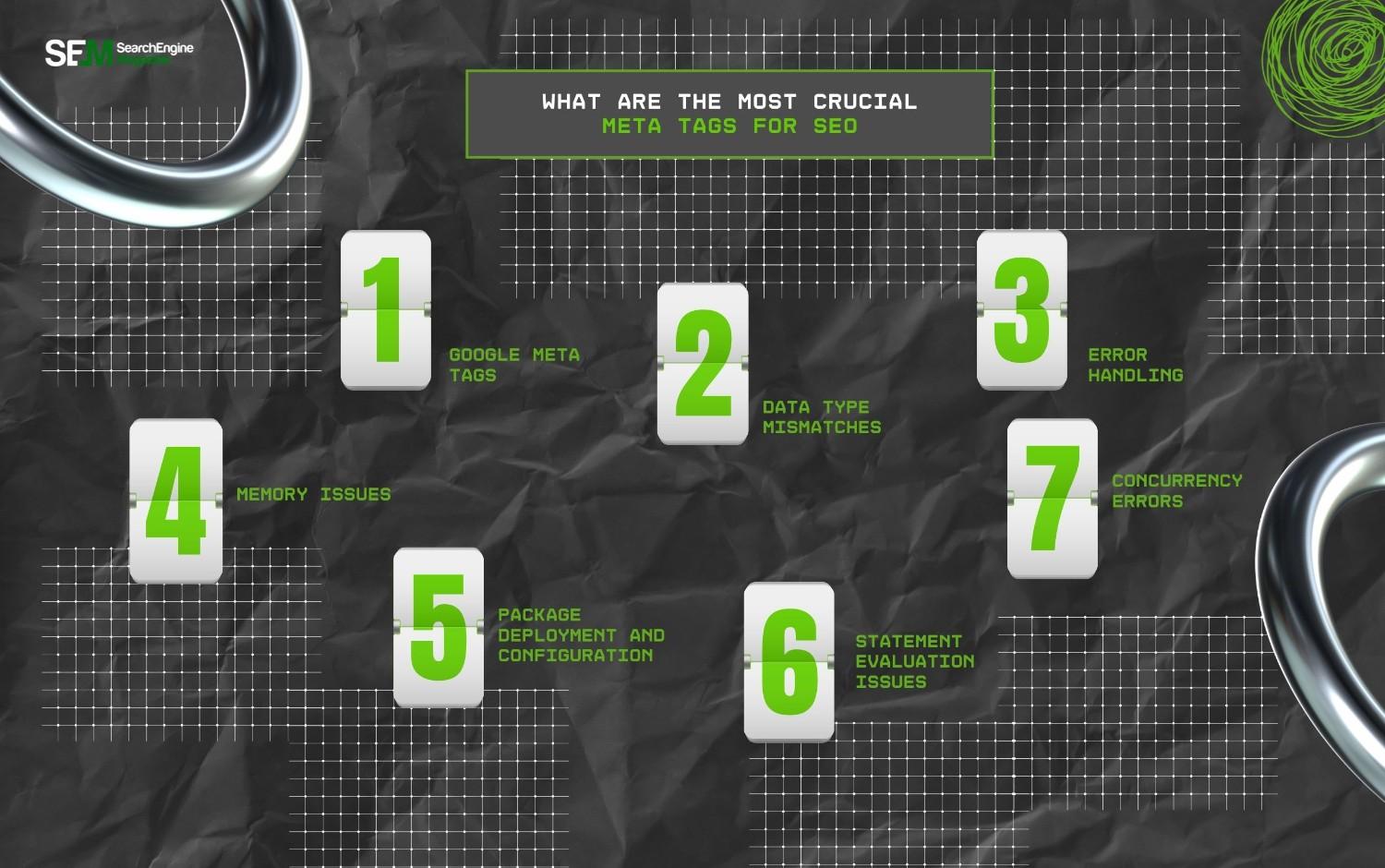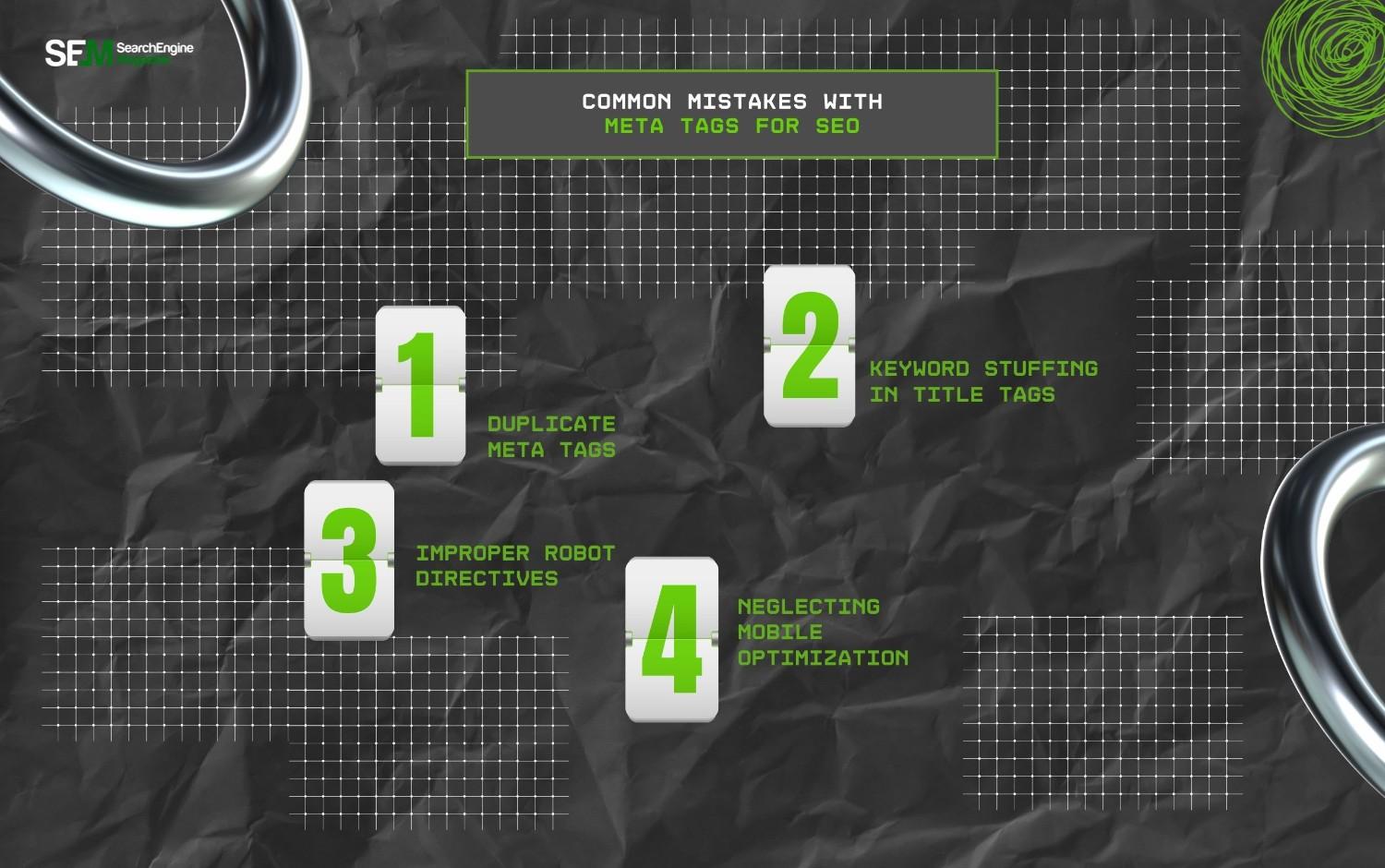How AI Website Builders Are Transforming Seo Strategy For Hosting Companies
Dec 04, 2025

Dec 04, 2025

Dec 04, 2025

Dec 04, 2025

Dec 02, 2025

Dec 01, 2025

Nov 29, 2025

Nov 28, 2025

Nov 28, 2025
Sorry, but nothing matched your search "". Please try again with some different keywords.


SEO Meta tags provide in-depth detail about your web page. It is one of the best ways to help the search engine understand the content on that page. Most people misunderstand these little tags and give them a bad rap.
The reason is that we have so many people who are misusing SEO Meta tags. In the past, you would find users manipulating the search engine algorithms by stuffing keywords in their Metadata. Due to this, Google has changed its algorithm on how it values and treats Meta tags.
You need to understand how the Google algorithm works when it comes to Meta tags. One thing you need to understand is that Meta tags are the secret sauce of your SEO success. This article will look at the evolution of SEO Meta tags and how you can use them to your advantage.
It is good to know the best practices of SEO Meta tags and the ones that you need to avoid. Most people get it wrong because they lack this critical information. Let us start by looking at the meaning of Meta tags before we move forward.

SEO Meta tags are tiny bits of HTML coding that assist in describing the content on your web page to various search engines like Google. The term “Meta” is a short form of the word “metadata.”
It is supplemental on your web pages, like the page description, title, and content type. The search engine will use the Metadata in the SERPs (Search Engine Results Pages) that it shows to users.
When you check your SEO Meta tags, you will find the critical issues that affect the indexability of your website. It is good to understand all this information before proceeding with this topic. The other thing you could be asking is whether you need Meta tags for SEO.
Generally, Meta Tags help search engines better understand your content and improve user engagement on your website. So, optimizing your content with meta tags is kinda vital.
Apart from this, SEO meta tags benefit websites in numerous ways, which include—
Increasing Search Visibility— Firstly, SEO meta tags help in providing the context for the web page content. So, search engine algorithms better understand and index pages.
Enhancing Click-Through Rates (CTR)— Moreover, the title tag and meta description provide a glimpse of your content that helps the audience understand the context. So, improving the CTR by convincing them to click.
Boosting User Engagement— In addition to this, the meta tags give a snippet for the actual content of the page. So, when the audience’s expectation matches the content, it boosts the overall engagement.
Managing Webpage Performance— Finally, the meta robot tags instruct search engines on how to crawl and index the pages. So, preventing duplicate content and managing the page behavior.

If you want to get a good ranking in the search engine, you have to use the SEO Meta tags for the right purpose. These inclusions can have significant effects on the ranking of your website in the search engine.
If you use SEO Meta tags in the right manner, it will help in enhancing the user experience. The two main things to consider are the Meta description and title tag. We can confidently say that they are the most important Meta Tags in the market.

Search engines value Meta tags in different ways. However, Google ranks top when you want to learn how to use Meta Tags. The comments from Google Meta tags can help you to work with any other search engine.
It is crucial to pay close attention to these differences and adapt your site and optimization requirements. Proper use of Meta tags will tell Google who you are and the main intention of your content. Therefore, Google Meta tags are the primary determinants of your ranking in the search engine.
You can use it in content such as SlideShare, rich media, webinar, service, and product and blog post. You can use the SERP key to check the Meta tags that influence SEO and the Google search results.
One of the things that search engine value is informative content which answers the questions of searchers concisely. When you optimize Meta tags for SEO, it will highlight the top elements in your content. You will discover that your site will begin to stand out in the search results.

These are among the widely used SEO Meta tags. Even though it is not a Meta tag technically, you will always find people using it when tagging their web pages.
It is an HTML tag or SEO title that presents a concise description of the web page. It is a crucial element in social sharing, usability, and SEO. Search engines normally use the tag and then display it as a clickable hyperlink in the Search Engine Results Pages.
The SEO Title has to be unique and present on all your web pages. The best title tags should range between 50 to 60 characters in length. Don’t forget to include your focus keyword in this statement. It is one of the ways to optimize your title tag for SEO.

The application of Meta description tags is popular in SEO marketing. In 2009, Google announced that it will no longer continue to impact the ranking of your website. The reason was that the purpose of Meta description tags had evolved.
Currently, Meta description tags only have one crucial role to play. It is used to improve the click-through rate (CTR) of your website. The tag now serves the purpose of being the organic ad copy on your website. It helps the searchers as they try to skin through the Search Engine Results Pages.
Therefore, you should write a better ad if you want to get a high number of clicks? Most SEO experts will tell you that the process is quite simple. The length of the Meta description tag should be 160 characters in length.
Observing these guidelines when creating Meta description tags that increase your click-through rate. It is one of the best ways to increase your conversion rate. Remember this the main reason people create a website for their brand. The tactics will help you to create a winning Meta description tag.

We are living in a world that is evolving around mobile devices. Therefore, specifying a viewport tag and promoting mobile-friendly experiences is vital. Viewport tags are not a common inclusion on any modern website.
If you don’t have these tags on your website, the page will display for the widths of the desktop. It is important to make sure that all your pages are scaled for the use of mobile devices. You don’t want the type of results that will force you to zoom and pinch the screen to view the content.

You should also include social SEO Meta tags for Instagram, Pinterest, Facebook, and Twitter. It will help you in optimizing social sharing streams for your web content. Social Meta tags allow you to stipulate how your images, descriptions, and titles will appear on social media.
Optimizing social content will spread easily with mentions and re-shares. This results in new inbound links for your content and this has a positive effect on SEO. It is one of the most effective strategies in SEO Meta tags.
These SEO Meta tags determine the character set for the page and have to be present on all pages. In the absence of these tags, web pages will not render correctly in the browser. It is good to make sure that you have them at all times on your website.

Canonical SEO Meta tags are technically speaking not Meta tags. In most cases, people include them in tagging web pages. The major search engine was the first to introduce this concept in 2009. It is among the biggest advancements in the SEO Industry.
The main role of canonical tags is to inform search engines that a particular website is the preferred web page version. In the marketing sphere, it is also referred to as ‘rel canonical’ of ‘canonical URL.”
As a result, both the URLs will reflect the web page but the crawler will see them differently. If this takes place, Google can index the two URLs and this can be confusing to search users.
The use of canonical Meta tags will help you to avoid duplicate content. You will get warnings for any multiple URLs. If you want to learn more about SEO, YOAST has some of the best articles on this topic. It will help you to get the maximum benefits from your metadata efforts.
To ensure that your meta tags are improving your SEO performance, here are a few strategies that you can simply try—
First things first, meta tags act as the first impression for your webpage content. So, it needs to be relevant, credible, and provide the audience with a compelling reason to click.
For example, if your content is about “Best SEO Practices”, your meta tag should include the answer to this query. So, directly include a snippet of the best practices, which will make the readers click on the page to read the complete content.
Apart from this, the meta tag should address the search intent of the users. That is, using keywords that match the search query of the users.
For example, if your target audience’s search intent is to do research for buying a commercial product, your meta tags should include comparison keywords, benefits, and others. So, for shoes, the title tag should be— “Best Shoes In 2025: Features, Benefits, & Pricing”

To get maximum benefits from using meta tags, certain mistakes should be avoided. This way, you can prevent hurting your search visibility. So, some of the common mistakes to avoid include—
Avoid using the same generic meta description across multiple pages. This will affect your search rankings and CTR. So, create unique and content-specific meta tags for each page.
Moreover, stuffing the title tag with keywords without making a coherent sense can make your page seem like a spam site to Google crawlers. So, avoid it by using proper title tags with focused keywords.
In addition to this, robot directives need to be specific and proper. With AI Overviews prevailing on SERPs, improper directives for meta robots can exclude relevant content or prioritize irrelevant content. So, align the tags with the right directives.
Given that meta tags appear differently on mobile devices compared to desktops, optimizing them for mobiles can further improve search rankings and audience engagement. So, keep the title simple and efficient with a 120-character-long meta description.
The first thing you need to understand is that these tags will not harm your website in any way. However, they are just occupying your space and will not help your SEO in any way. It could be the right time to clean up some of the tags. These include
Abstract tag that uses a short sentence to describe a web page. It’s rarely used because most people prefer the use of the description Meta tag.
The other one is the author tags, which name the author of the web page, but are unnecessary. Currently, Google respects authorship markup and recommends using rel=author to denote the author instead.
The cache-control tag controls the number of times the web page is cached in your browser. Google prefers users to put cache control in HTTP headers. The other useless tag is the copyright because the footer already has the copyright of the site, and there is no need to declare it again.
The other unnecessary tags include distribution, date of expiry, generator, rating, resource type, and revisit after. You will discover that most of these tags have no use. It is good to concentrate on SEO Meta tags that add value to your website.
Now that you have a comprehensive idea about meta tags for SEO, you can choose the right ones to boost your website’s visibility and drive organic traffic.
Moreover, choosing the right meta tags for your site can help influence the search engine algorithms. Improving the audience engagement on your site and the search rankings.
So, with the complete guide on SEO meta tags, go ahead and boost your ratings on search engines with more user clicks today!
Barsha is a seasoned digital marketing writer with a focus on SEO, content marketing, and conversion-driven copy. With 7 years of experience in crafting high-performing content for startups, agencies, and established brands, Barsha brings strategic insight and storytelling together to drive online growth. When not writing, Barsha spends time obsessing over conspiracy theories, the latest Google algorithm changes, and content trends.
View all Posts
How AI Website Builders Are Transforming Seo ...
Dec 04, 2025
Pinterest Unblocked: How To Access Socials By...
Dec 04, 2025
Instagram Unblocked: A Guide To Accessing S...
Dec 04, 2025
Gimkit Host: Is This Online Game Hosting Too...
Dec 02, 2025
Driving Growth Through A Smart Product Market...
Dec 01, 2025

